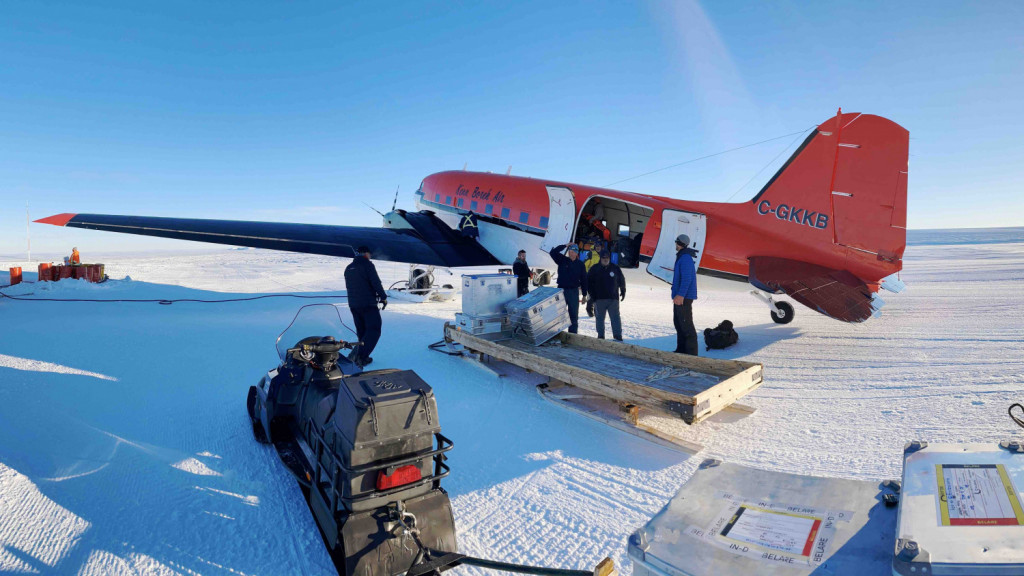BELARE 2022-23 Underway at the Princess Elisabeth Antarctica
Following a smooth departure from Cape Town, the lead team for the 2022-23 austral summer research season arrived without incident at the Princess Elisabeth Antarctica on the evening of Thursday, November 24th.
The mission of the lead team is starting up all of the station’s systems, including its renewable energy production and water production systems, clearing snow that accumulated around the station during the austral winter, restarting the station's water treatment unit and setting up scientific equipment for scientists who are working remotely in their office in Belgium - with constant access to data being gathered at the station.
Science support from the start
Only three days after the start of the expedition, the station is already welcoming researchers from the Alfred Wegener Institute (AWI), who are measuring ice thickness and physics, in particular the number of ice platelets that are accumulating under the ice near polar ice shelves at the coast. The survey is taking place along the Queen Maud Land Coast on board the AWI Polar 5 aircraft. Alain and a small group of three scientists were set to provide logistical support to Dome Fuji (approximately 800 km away from PEA on the Antarctic Plateau) Japanese researchers looking to drill ice cores of some of the oldest ice in Antarctica, possibly going back as far as one million years. Unfortunately, due to logistical challenges, this support will be postponed to next year's expedition.
Later in the season, the station will also welcome meteorite hunters from the Vrij Universiteit Brussel (VUB) BAMM project, financed by BELSPO. And of course, Quinten Vanhellemont from the Royal Belgian Institute of Natural Sciences will return to do more albedo measurements for the Horizon 2020-funded HYPERNETS project using the equipment he set up last year with the help of IPF’s team on-site. In addition to projects that require the presence of scientists on-site, IPF engineers will continue monitoring and maintaining scientific equipment collecting data year-round, including automatic weather stations for the PEACE project and follow-up work for the ANTSIE project, which is studying snow petrel feeding behaviour and location as well as their nesting habits.
Outreach
Besides this, several online educational lessons are planned with schools and universities during the season. The first one will already be held in the second week of December. And of course, we’ll be sharing lots of photos and videos of the activities of the team and the scientists as they settle into life at the station and go on their adventures in the field.
Stay tuned!

